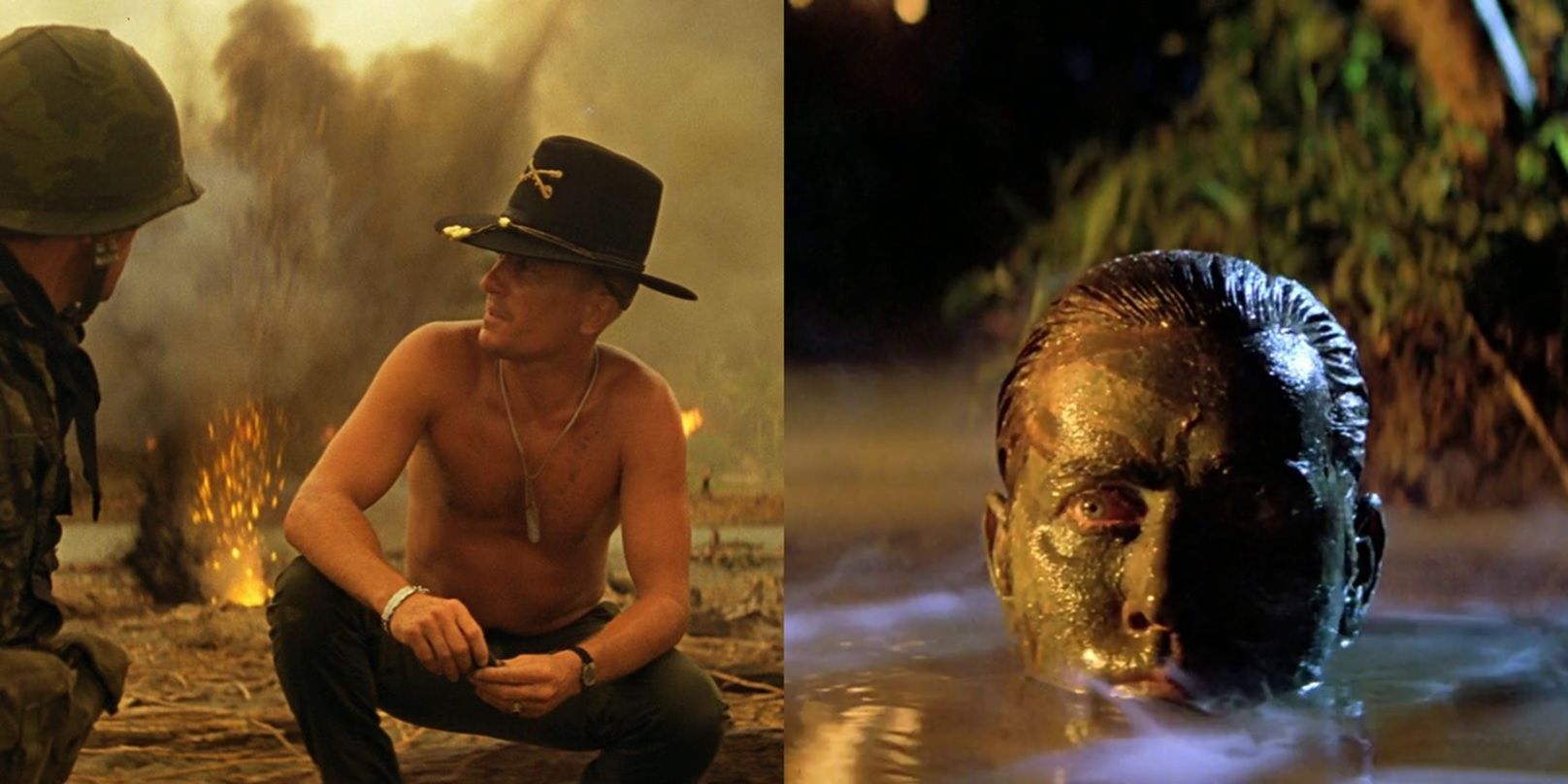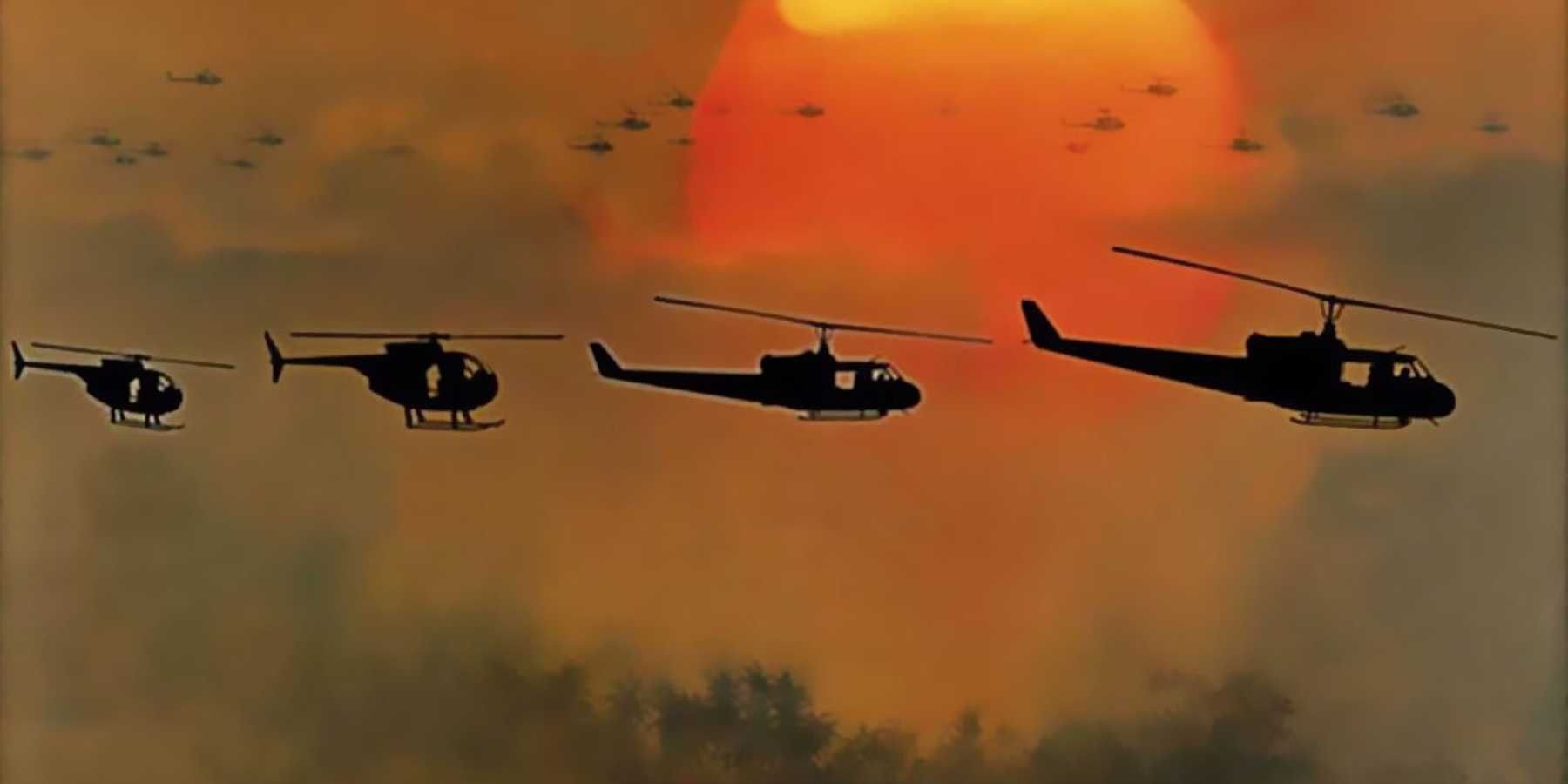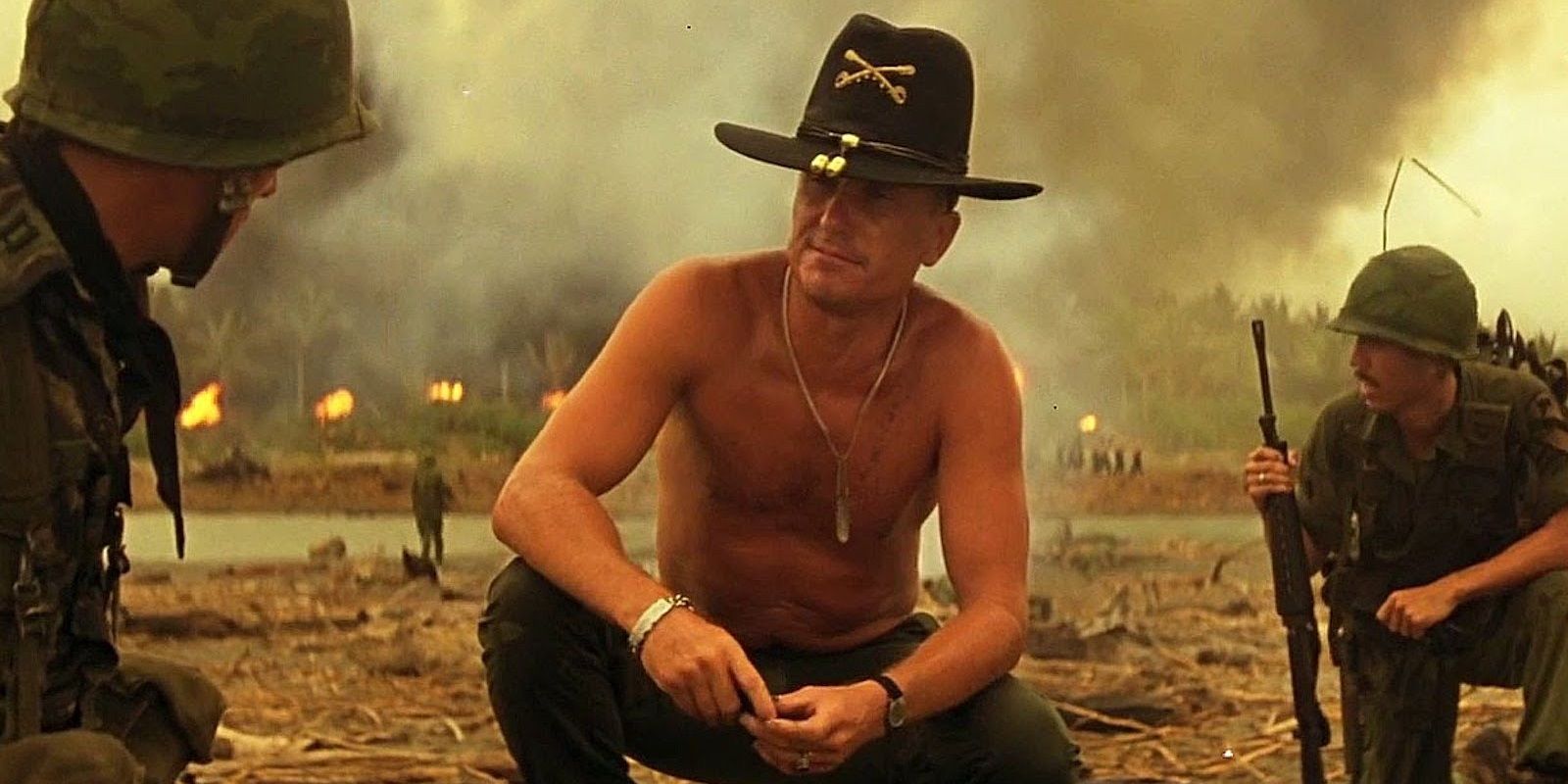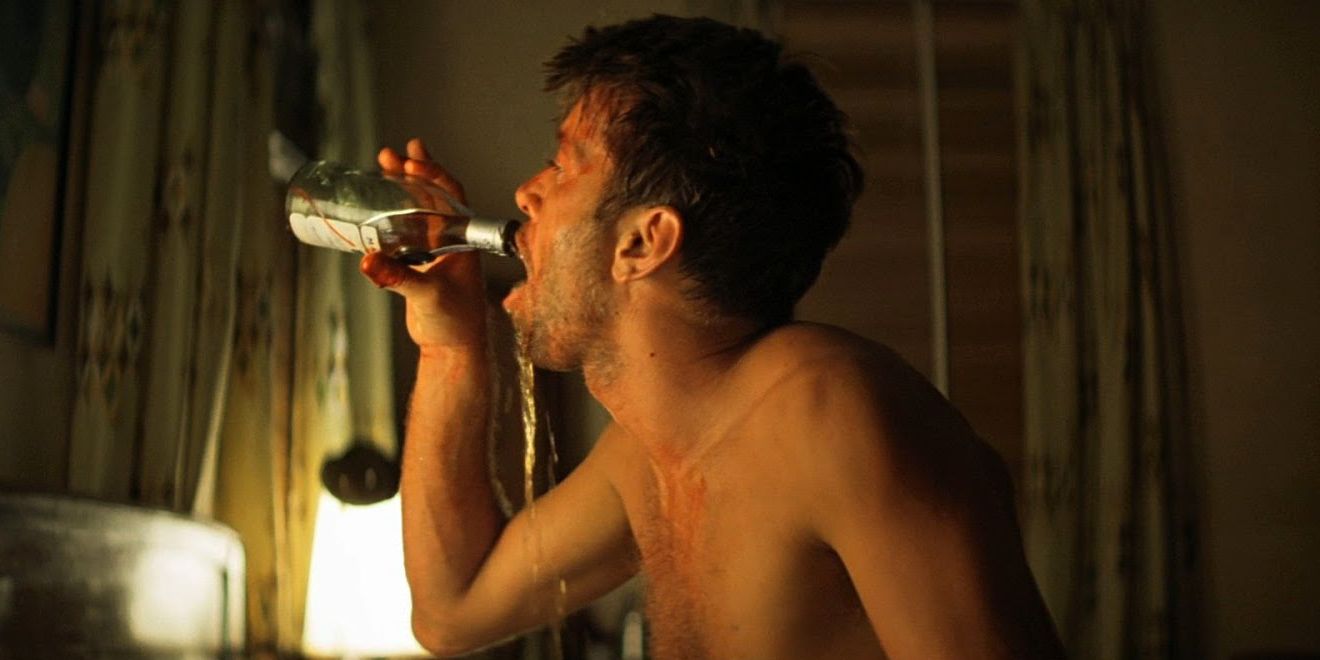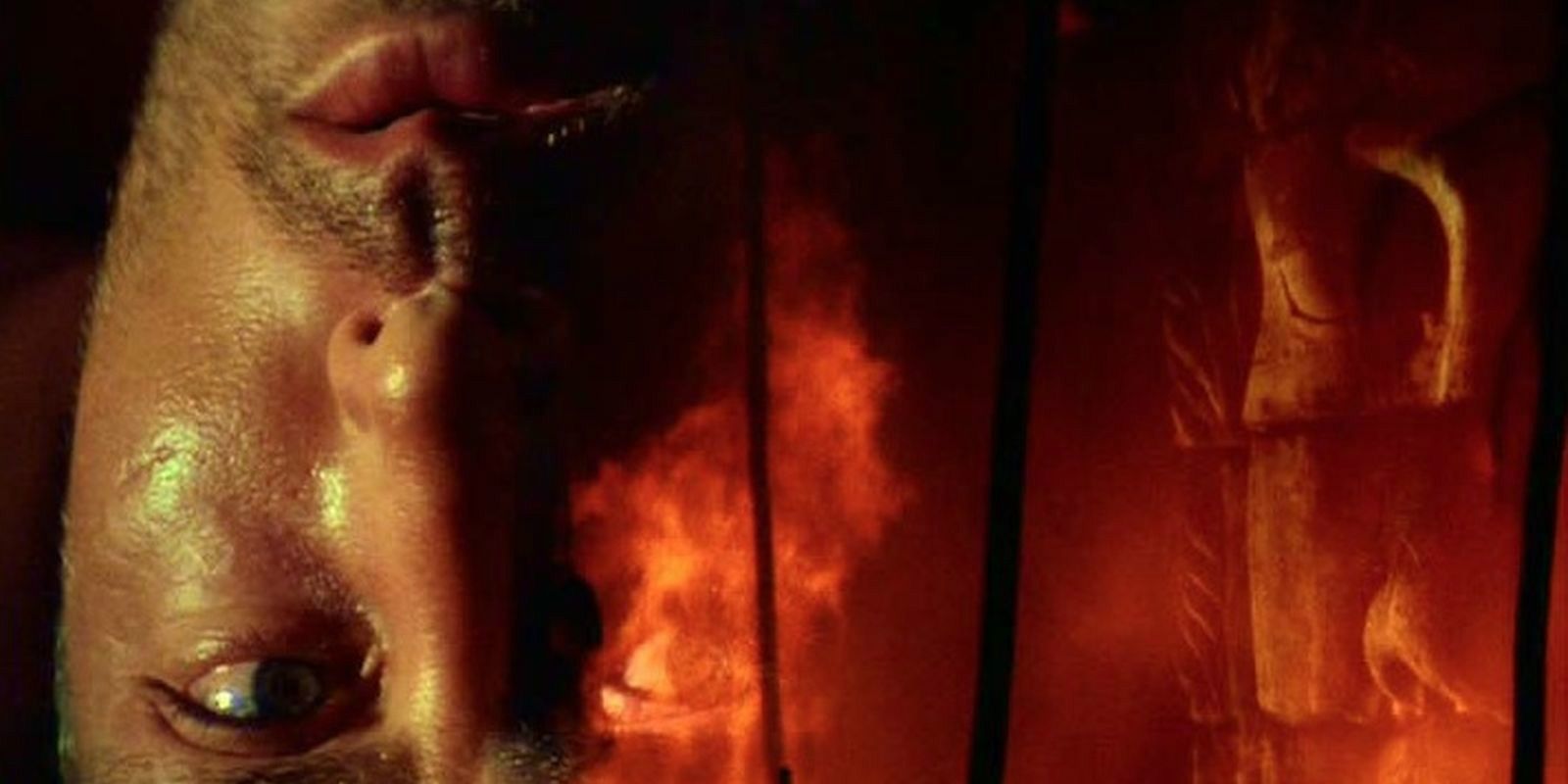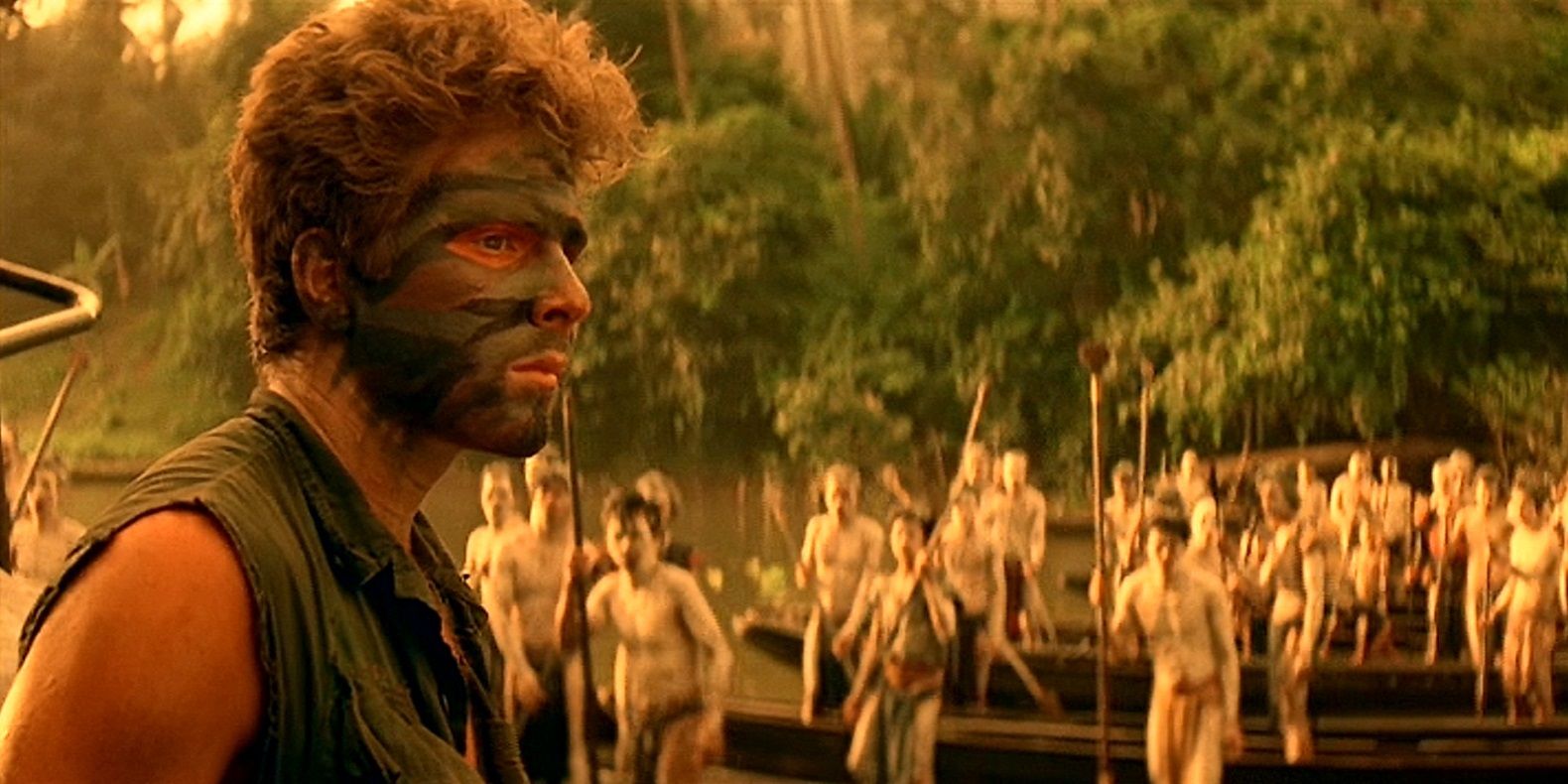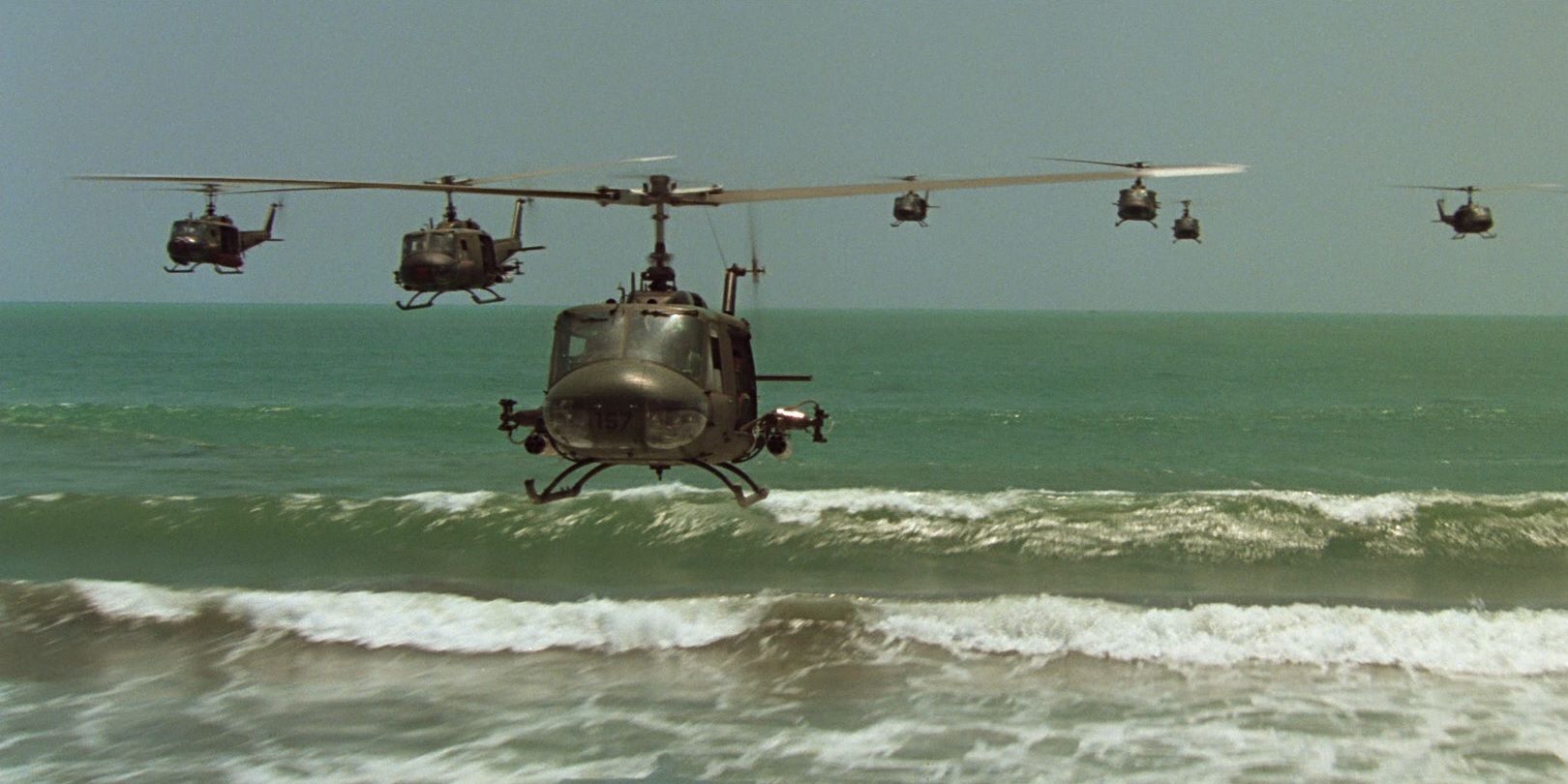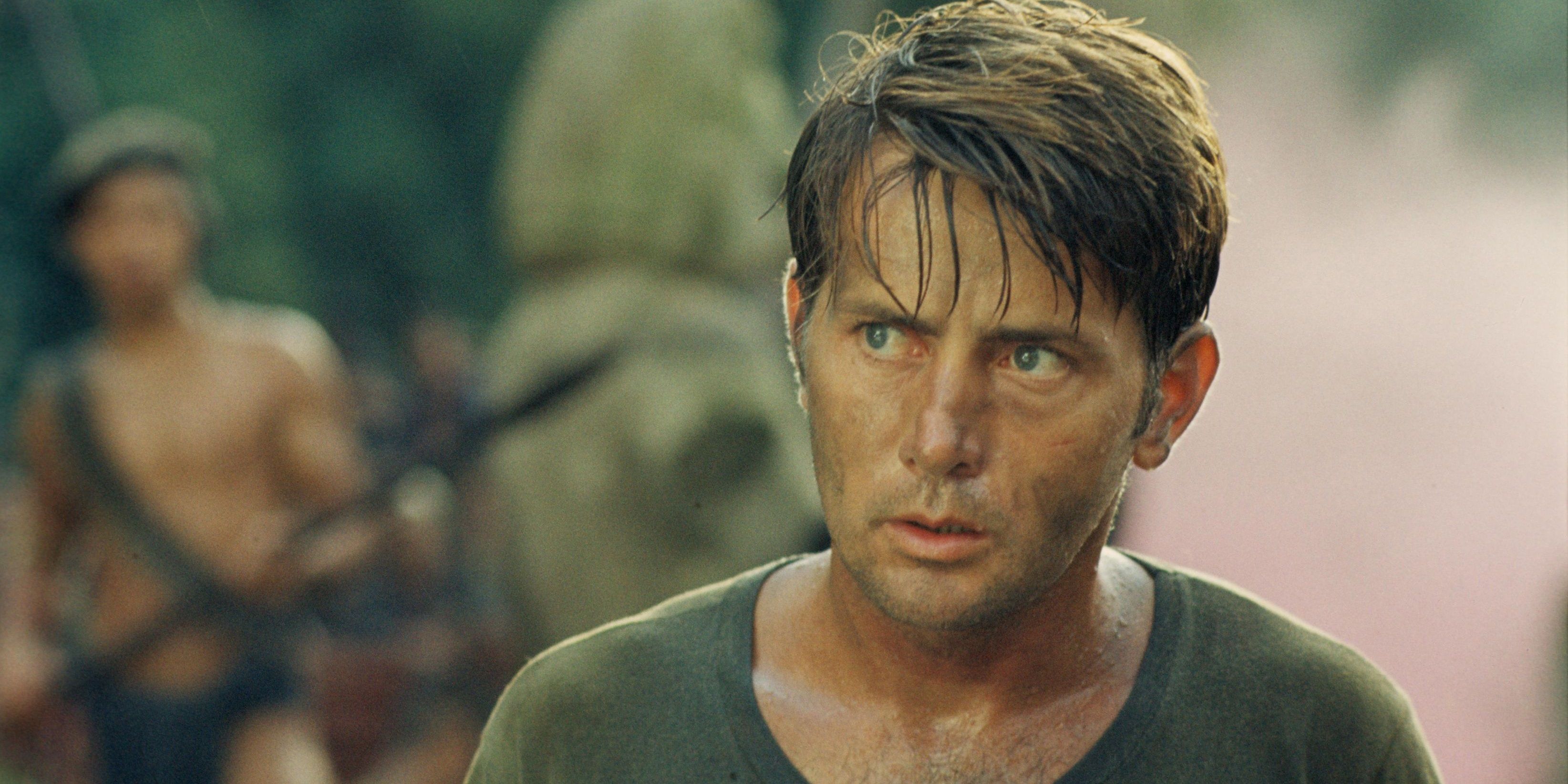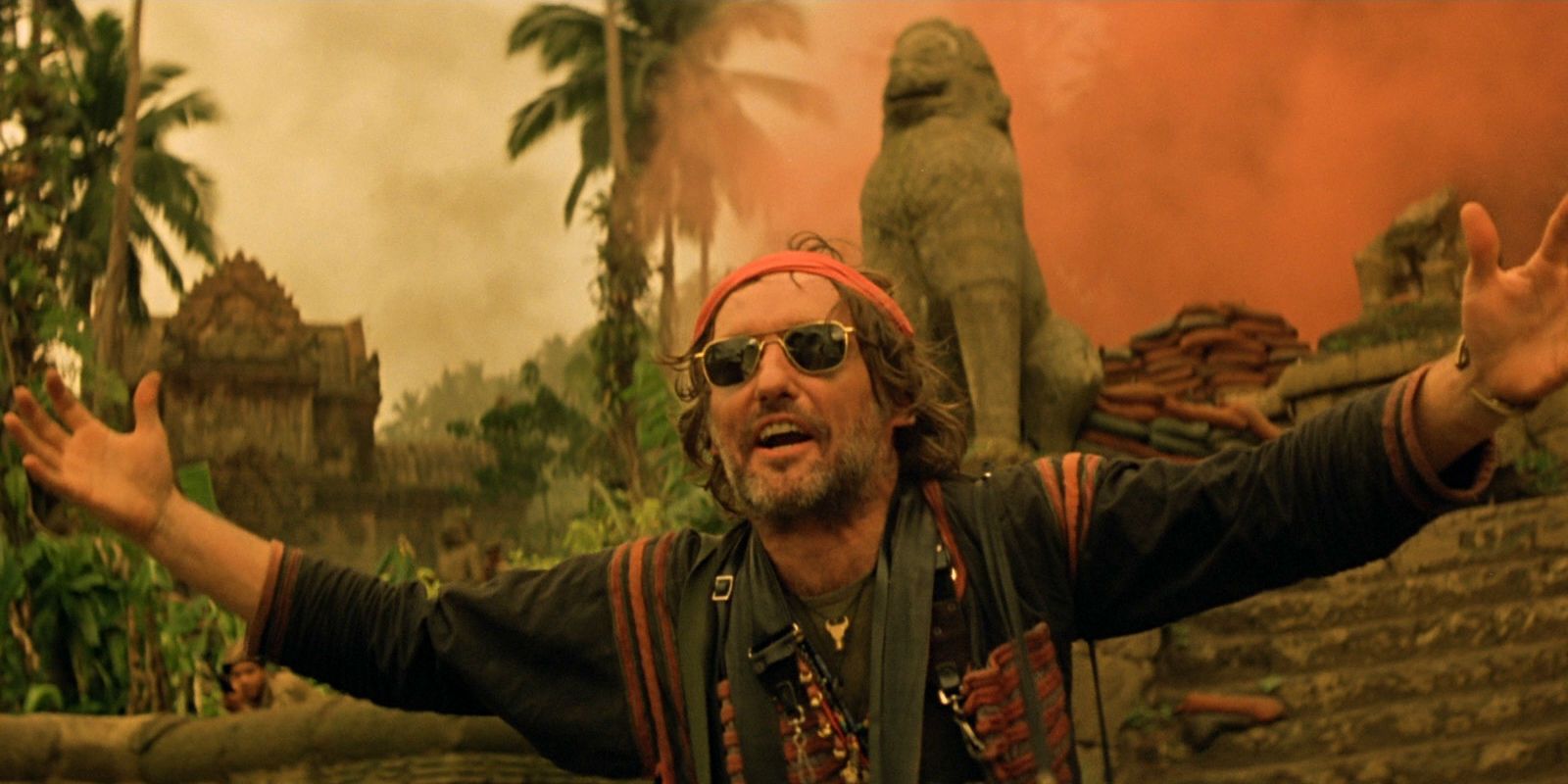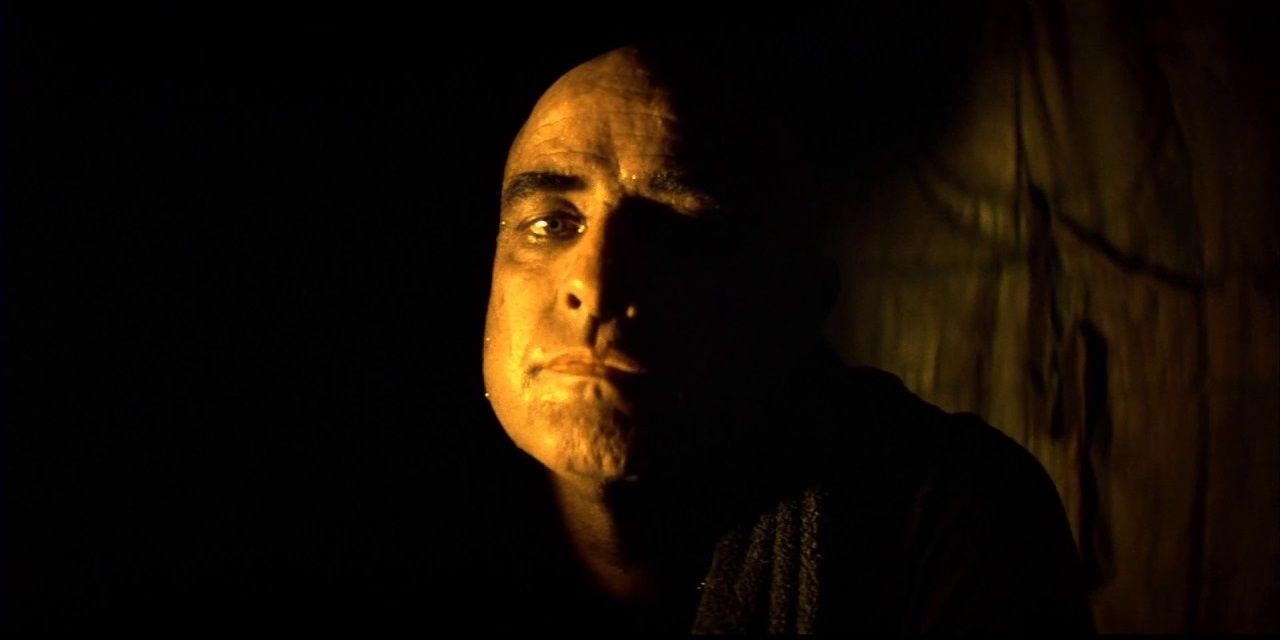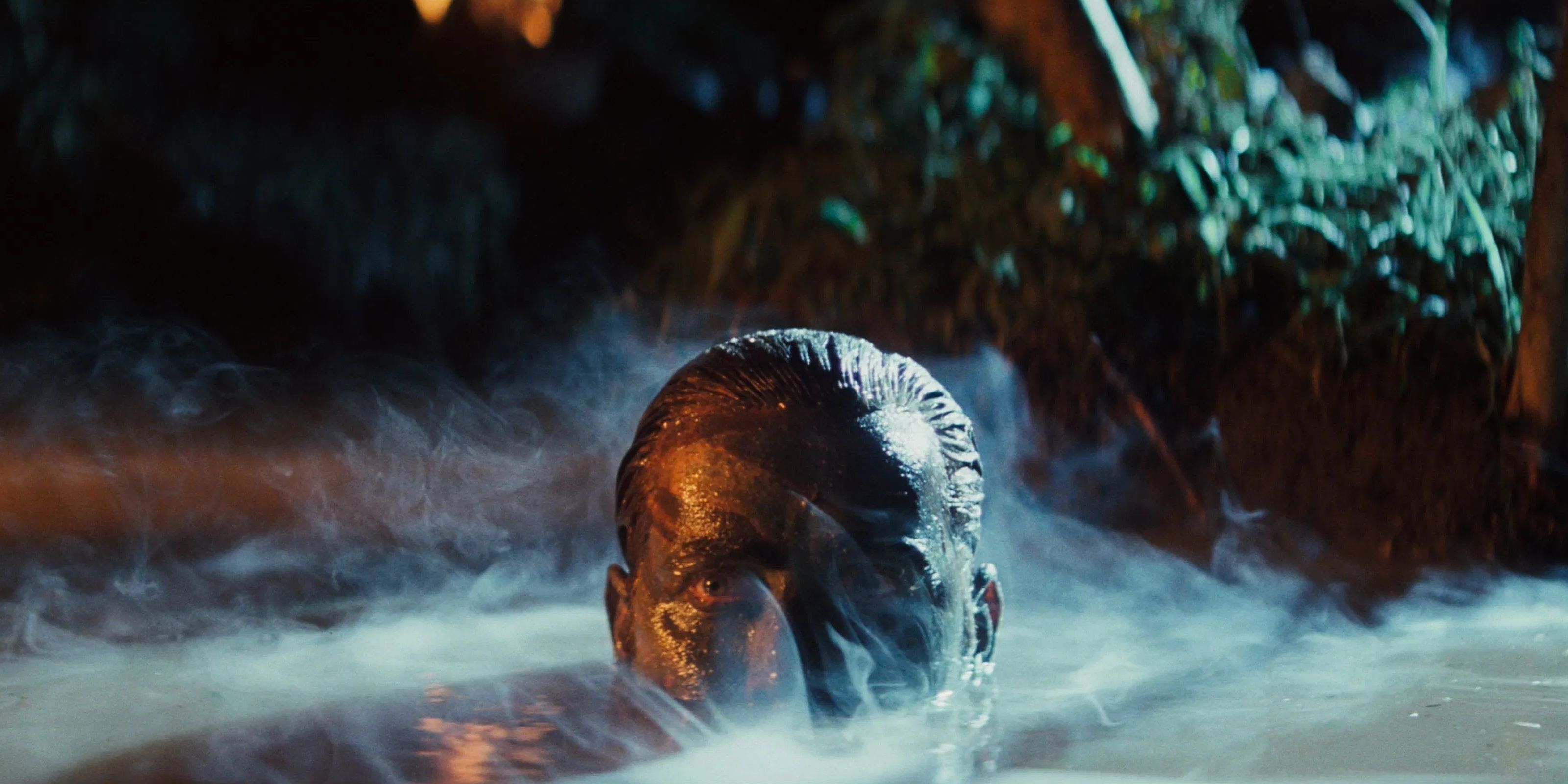1979’s Apocalypse Now has been consistently praised as a masterpiece in the more than 40 years since it hit theaters. After helming The Godfather, The Godfather Part II, and The Conversation, Francis Ford Coppola added yet another entry to the pantheon of the greatest movies ever made with his mind-bending, nightmarish vision of the Vietnam War.
Although Coppola can’t seem to stop recutting the movie (first as “Redux,” then as “Final Cut”), Apocalypse Now remains a timeless cinematic gem that fully deserves its ridiculous levels of praise. From the psychedelic imagery to the haunting climax, Coppola's cinematic opus still retains the power to horrify and enthrall audiences today.
The Hypnotic Opening Scene
Francis Ford Coppola instantly plunges audiences into his trippy cinematic odyssey through the Vietnam War with the hypnotic opening sequence of Apocalypse Now.
In one of the best uses of the Doors' rock classic "The End" in a movie, Apocalypse Now begins with a scene showing a jungle landscape being lashed with napalm as Jim Morrison sings on the soundtrack. This is masterfully intercut with Willard’s heavy drinking to establish his alcoholism and the psychological toll that the conflict is taking on him. This sequence is the perfect introduction by marrying both images of horror with a mournful song that bluntly states that "this is the end."
The Heart Of Darkness Structure
John Milius’ screenplay for Apocalypse Now loosely adapts the structure of Joseph Conrad’s seminal 1899 novella Heart of Darkness, swapping out the Congo River setting for the horrors of the Vietnam War. Milius' efforts were rewarded with a nomination for Best Adapted Screenplay by the Academy of Motion Picture Arts & Sciences.
The Heart of Darkness structure gives Coppola’s gonzo vision of the conflict in Vietnam a familiar narrative backbone. Since the story is a journey and Willard spends the whole movie traveling to a mysterious destination, Coppola is free to explore all kinds of vignettes and story avenues along the way.
Martin Sheen’s Tortured Performance As Captain Willard
The epic scale of Apocalypse Now is anchored by an intensely committed Martin Sheen’s raw, intimate portrayal of its antihero, Captain Willard. Ravaged by alcoholism and PTSD, Willard struggles to reconcile his internal afflictions with the ravages of war he witnesses each day he is in Vietnam.
Sheen’s tortured portrayal of an unhinged soldier being sent on the latest in a long line of sadistic black-ops missions is as heartbreaking as it is compelling. As a last-minute replacement for Harvey Kietel, Sheen proved he was the right choice by expertly conveying Willard's disgust at himself and the war he is immersed in.
Coppola’s Psychedelic Visuals
Coppola and his cinematographer Vittorio Storaro managed to capture the drug-addled haze of the Vietnam War through the use of surreal, eye-popping visuals. From bright bursts of napalm tearing up the jungle to Martin Sheen’s camouflaged face poking out of a murky river to Dennis Hopper emerging from a giant plume of red smoke, Coppola and Storaro filled Apocalypse Now with mind-boggling psychedelic imagery that helped create one of the best psychological war movies of all time.
One Of The Best Exposition Scenes Ever Written
One of the most notable commonalities between the various cuts of Apocalypse Now is that Coppola has never tampered with the early scene in which Willard is given his mission by his superiors. This is a well-written exposition scene that succinctly sets up the main conflict of the movie before sending Willard on a treacherous riverboat trip in search of a dangerous villain.
Willard’s superiors’ brief summary of Colonel Kurtz’s disturbing fall from grace – paired with the grave secrecy surrounding the operation – establishes the intriguing mystique surrounding Kurtz that makes the rest of the movie so captivating.
The Biting Satire Of The “Ride Of The Valkyries” Sequence
One of the most iconic scenes in Apocalypse Now sees an armada of American helicopters bombing out a Vietnamese village full of terrified civilians while blasting Richard Wagner’s “Ride of the Valkyries” from their choppers’ speakers.
Aside from being gloriously cinematic, there’s an ironic bite to the American troops’ gleeful use of Wagner’s music because, according to The New York Times, Wagner was Hitler’s favorite composer.
The Episodic Plotting
The episodic plotting of Apocalypse Now makes it endlessly rewatchable, because there’s always something new going on. Willard’s journey up the river is like a bunch of Vietnam War shorts stitched together to create an episodic feels that invites comparisons to Dante's Inferno. Coppola’s movie isn’t tied down by a traditional three-act Hollywood plot and instead just follows the characters through the nightmarish hellscape of war.
Documentary-Like Realism
There are plenty of extravagant set pieces in Apocalypse Now that make it a big, cinematic epic, but Coppola frames his harrowing portrait of war with an almost documentary-like realism.
Many of the battle scenes play like Coppola essentially staged a real battle at his shooting location and then followed the action around with a camera. There’s no mistaking Apocalypse Now for an actual documentary, but it’s far from a Hollywood fantasy.
Marlon Brando’s Haunting Turn As Colonel Kurtz
While the lead of Apocalypse Now is Martin Sheen as Captain Willard, there's another actor who steals the show with only a small amount of screentime. In one of his best roles, Marlon Brando stars as the elusive and mysterious Colonel Kurtz.
Brando’s haunting turn as Kurtz managed to live up to all the hype from the previous two hours of runtime. Willard spends the whole journey trying to get in Kurtz’s head, then realizes when he actually meets him that he can never understand the man's behavior or what motivates him to start a cult in the heart of the Vietnam jungle.
Willard’s Final Confrontation With Kurtz
Willard’s long, dangerous journey up the river and the days of torture he endures when he finally reaches Kurtz’s compound all build toward a climactic confrontation between the two – and that standoff doesn’t disappoint.
It’s the perfect culmination of the hallucinatory vision of Coppola’s masterpiece. The sequence shockingly juxtaposes Willard’s brutal killing of Kurtz against the ritualistic sacrifice of a water buffalo. It's an ending that achieves an almost mythical power with the perfect combination of evocative cinematography, moody score, and excellent acting from the two male stars.

